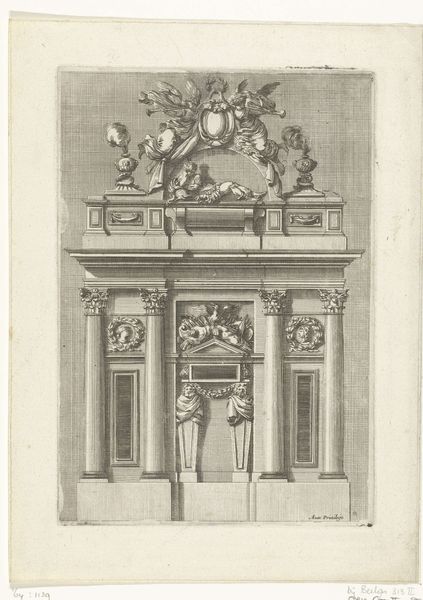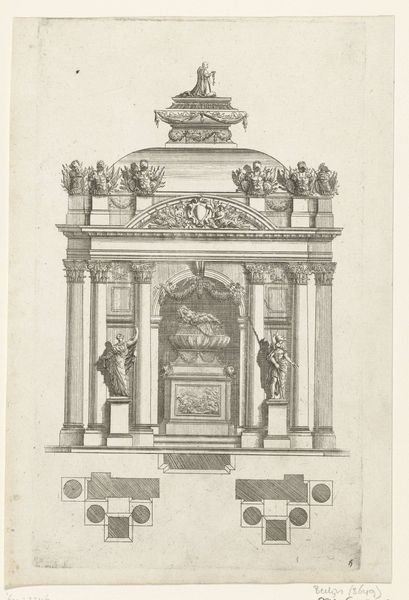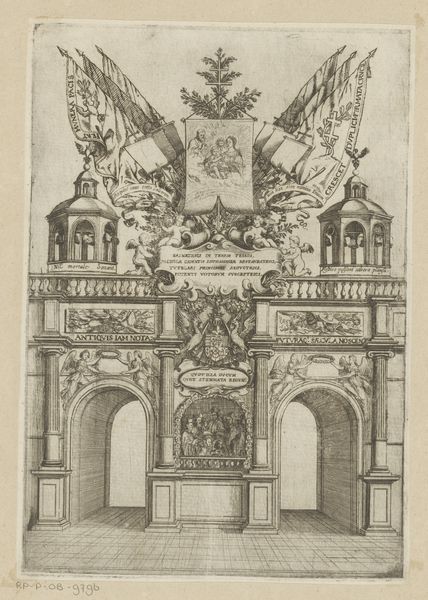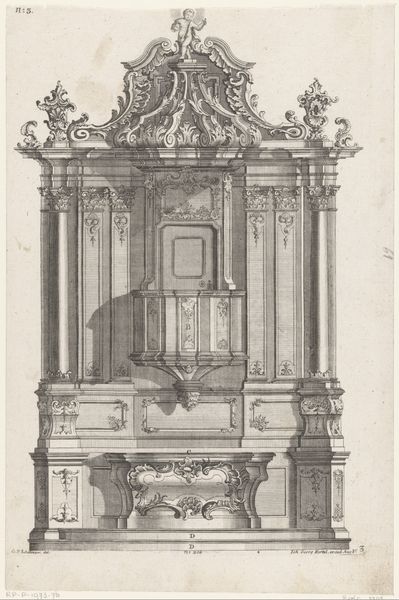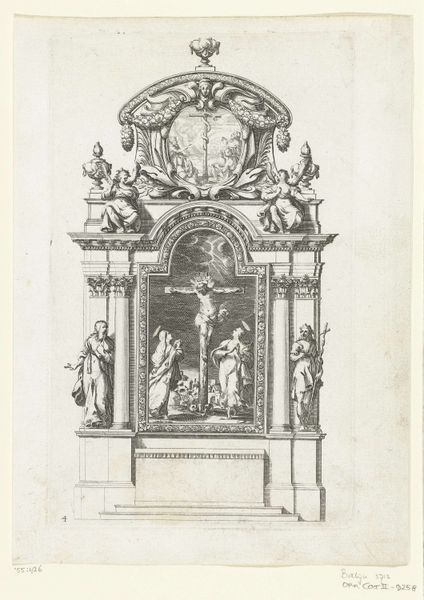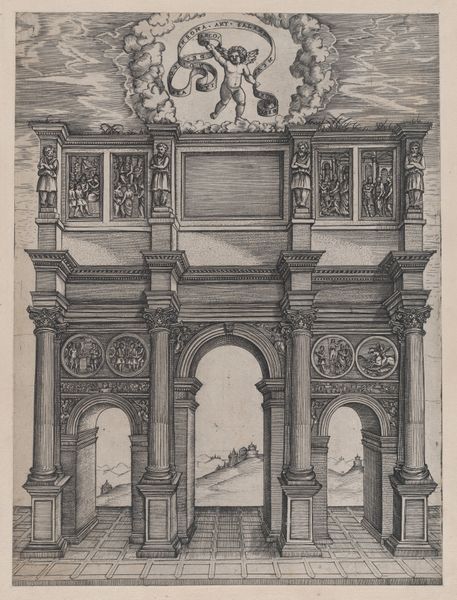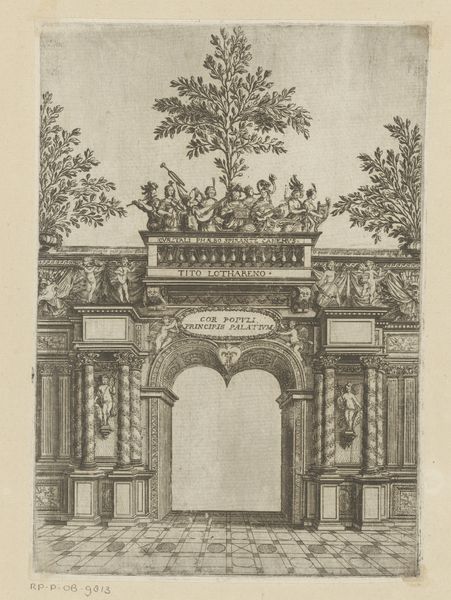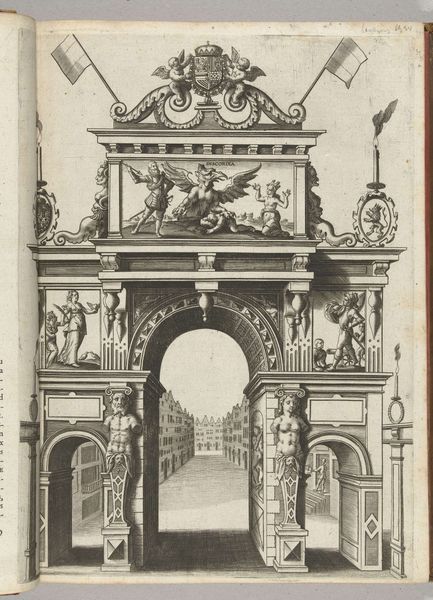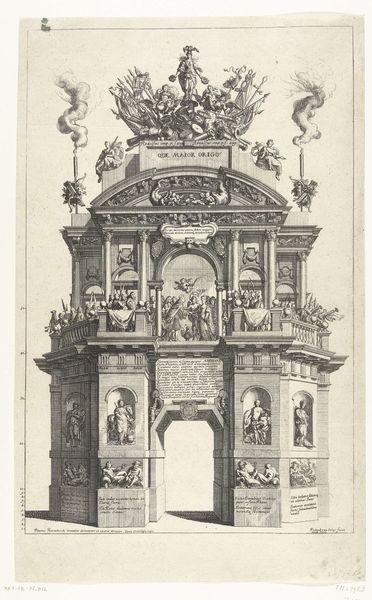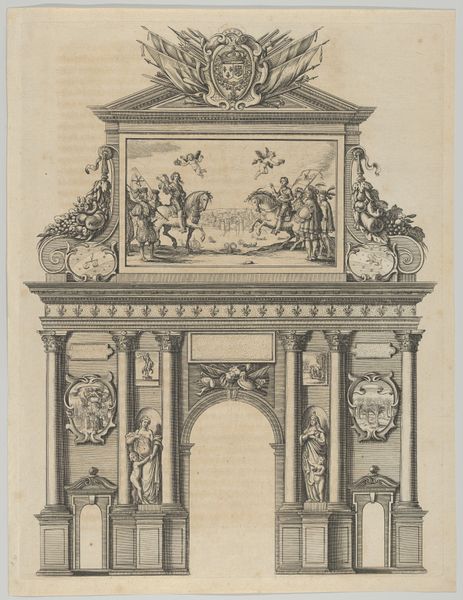
print, engraving, architecture
#
baroque
# print
#
cityscape
#
history-painting
#
engraving
#
architecture
Dimensions: height 259 mm, width 179 mm
Copyright: Rijks Museum: Open Domain
Curator: Look at the intricate details of this baroque print, "Triumph Arch for Charles IV," created before 1664 by Sébastien Leclerc I. It's a wonderful example of celebratory art, meant to project power and prestige. Editor: It does have that grandiose air! My immediate feeling, though, is slightly unsettling—almost like a stage set without actors. It promises something big, but remains somehow…empty. Curator: I find that reading interesting. This archway was likely part of a series of ephemeral structures, displays and pageantry put up to mark Charles’ return. It's designed as a vehicle for communicating authority to the public, more about propaganda than literal celebration. Editor: So it's not about real emotion? A pre-fab monument constructed only of carefully designed messaging and visual bombast. The symmetry is impressive, the architectural detail precise, yet I don't get any visceral reaction. I can admire the technical skill of the engraving, but not sure if I like how I am invited to react. Curator: Well, let’s consider the context. These arches weren't meant to last. They existed for a brief moment of performative welcome and served as backdrops for important civic rituals. So the print serves a different role—it's about immortalizing a carefully managed *image* of the king for posterity. And remember this exists because of the rise in print culture which is the means of circulating ideology. Editor: That's what I find fascinating—the fleeting nature versus this relatively lasting impression. The Rijksmuseum as the gate keeper. How many of these existed at the time, or even more so now, do they represent the tastes of then or are they only the victors trophies that lasted? The tension between what's present in the moment and how we are meant to think or what’s actually true is pretty palpable for me. Curator: A print like this reminds us how visual culture actively shapes public perception, and that the grandest of monuments might often obscure more than they reveal. I always ask myself looking at this piece if it is as objective as the engraver makes it out to be, or if something of Leclerc I's vision is apparent, I hope it is. Editor: Precisely. And I like imagining the original experience of witnessing such fabricated grandeur collapsing eventually. Art captures that very transition, reminding us of the staged realities and their vulnerability in a chaotic world.
Comments
No comments
Be the first to comment and join the conversation on the ultimate creative platform.


